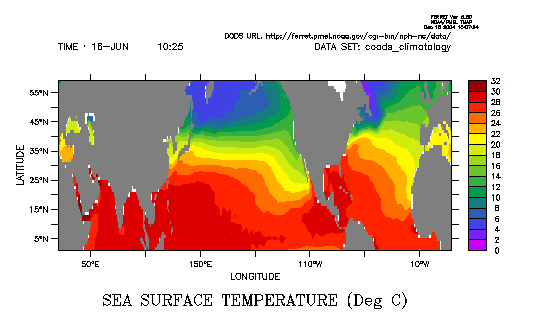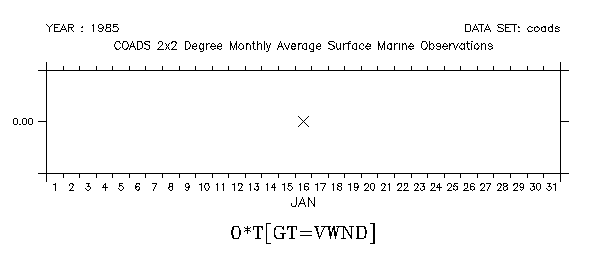yes? GO basemap X=-50:50 Y=-20:20 20
yes? POLYGON/OVER/LINE/FILL {0,1,2}, {2,1,2}, 111.55
Also, the code now checks that enough precision is used in labels to distinguish them: Previously key labels for this plot were 370, 371, 371, 372, 372, ...
yes? LET a = 370 + x[x=1:10:1] + 0.2*y[y=1:10:1] yes? SHADE/LEV=(370,382,0.5) a
OLD OUTPUT (note repeated 100.1E longitudes and 0.1N latitudes)
yes? LIST/FORM=tab aa
VARIABLE : (X[GX=XAX] + Y[GY=YAX])/100
BAD FLAG : -9.9999998E+33
SUBSET : 6 by 9 points (LONGITUDE-LATITUDE)
coord 100E 100.1E 100.1E 100.2E 100.2E 100.2E
0.1N 1.001 1.002 1.002 1.003 1.003 1.004
0.1N 1.001 1.002 1.002 1.003 1.003 1.004
0.1N 1.001 1.002 1.002 1.003 1.003 1.004
0.2N 1.002 1.002 1.003 1.003 1.004 1.004
0.2N 1.002 1.002 1.003 1.003 1.004 1.004
NEW OUTPUT
yes? LIST/FORM=tab aa
VARIABLE : (X[GX=XAX] + Y[GY=YAX])/100
BAD FLAG : -9.9999998E+33
SUBSET : 6 by 9 points (LONGITUDE-LATITUDE)
coord 100E 100.05E 100.1E 100.15E 100.2E 100.25E
0.11N 1.001 1.002 1.002 1.003 1.003 1.004
0.13N 1.001 1.002 1.002 1.003 1.003 1.004
0.15N 1.001 1.002 1.002 1.003 1.003 1.004
0.16N 1.002 1.002 1.003 1.003 1.004 1.004
0.18N 1.002 1.002 1.003 1.003 1.004 1.004
For very fine grids, or long formats specified with /FORMAT= qualifier, the coordinates and data
values may no longer line up in nice columns but this seems like a less severe problem than the
inadequate precision.
yes? PLOT/I=1:10 I yes? LABEL 5,7,0,0,0.2, "@C002this<NL>@C003now<NL>@C004works correctly."
yes? SET DATA "http://www.ferret.noaa.gov/cgi-bin/nph-nc/data/coads_climatology.nc" yes? SHADE/L=1 sst

yes? ! Show the location of the time coordinate in January 1985 yes? USE coads yes? PLOT/SYM/SIZ=0.3/HLIM="1-jan-1985": "1-feb-1985" 0*t[GT=vwnd]

yes? LIST/I=1:300:0 var
yes? USE coads_climatology
yes? SET AXIS/CAL=JULIAN time
yes? PLOT/X=140W/Y=0 sst
yes? PLOT/OVER/VS/LINE=3 {400,900,900,400}, {25.5,25.5,26.5,25.5}
yes? POLY/OVER/PAL=green {400,900,900,400}, {25.5,25.5,26.5,25.5}